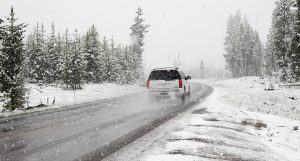As of recent, there have been changes to the rules permitting truckers to have more flexibility through snow or ice conditions. The Federal Motor Carrier Safety Administration (FMCSA) will allow it to be easier with the Adverse Driving Condition Exception evident for truckers. Maybe you need to brush up on this knowledge. After all, there’s been plenty that has seen a shift. The definition of “adverse driving conditions” are also inclusive to truck drivers which is very kind on the “person dispatching the run.” So keep your snow driving safe. Trucking through inclement weather can be risky behavior if you are unaware of the rules.
How Does It Go In The Snow?
Within the new limitations, a lot is changing in expansive and inclusive ways. Some of the new rules to the adverse driving condition exception widens the driving window up to two additional hours, during adverse driving conditions. Besides snow, this also includes flooding, wildfries, or hurricanes. This is also during the driving window, being both driving limit and on-duty limit. This is good to know, when you go in the snow.
How To Define “Adverse Driving Conditions?”
Definining “Adverse Driving Conditions” in a more appropriate light is to lay the responsibility beyond the truck driver. Previously, it was intended to show that none of the evidence of unusual road and traffic conditions. It would be as effective for the person dispatching the run with information. Which isn’t much. Adverse driving conditions through the snow now mean that “a driver may not know of it immediately prior to beginning the duty day.”
Safe Haven For Nobody But Hazmats
The Safe Haven rules is very easy to confuse. But it has exclusivity to “attendance and surveillance of motor vehicles” which only apply to certain hazmat drivers. You can check out more on the Safe Haven rule here.
If you would like us to ship your car through snow, hail and storm, visit us online at Alaska Auto Transportation! You’ll be able to get a FREE Quote on your order.




